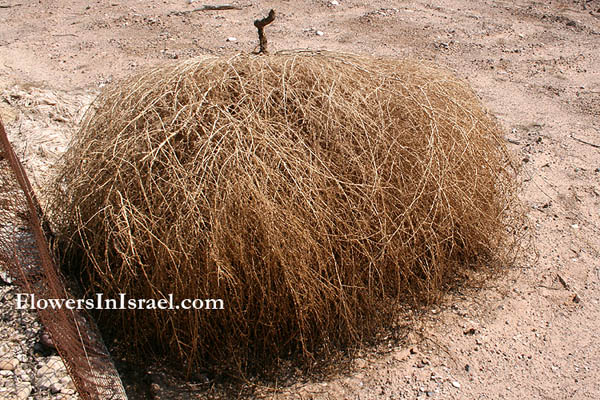Hebrew: קוכיה הודית, Arabic: قضقاض
| Scientific name: | Bassia indica (Wight) A.J.Scott | |
| Synonym name: | Kochia indica Wight | |
| Common name: | Indian bassia | |
| Hebrew name: | קוכיה הודית | |
| Arabic name: | قضقاض | |
| Family: | Chenopodiaceae, Goosefoot Family, סלקיים |

|
| Life form: | Annual undershrub | |
| Stems: | Densely branched at base, forming cushion, 50-200 cm diameter and up to 250 cm high | |
| Leaves: | Alternate, lanceolate | |
| Flowers: | Inflorescence spicate, mostly with 1-3 green sessile flowers in axils of leaf like bracts | |
| Fruits / Pods: | Fruiting perianth winged with membranous wings; Seeds wide elliptic, black | |
| Flowering Period: | September, October, November | |
| Habitat: | Disturbed habitats | |
| Distribution: | Mediterranean Woodlands and Shrublands, Semi-steppe shrublands, Shrub-steppes, Deserts and extreme deserts | |
| Chorotype: | Irano-Turanian - Saharo-Arabian | |
| Summer shedding: | Ephemeral |
|
Derivation of the botanical name: Bassia, named for Ferdinando Bassi (1710-1774), an Italian botanist and Prefect of the Bologna Botanical Garden (ref. genus Bassia). indica, of or pertaining to India, Indian. Kochia, named for Wilhelm Daniel Josef Koch (1771-1849), a German doctor and professor of botany (ref. genus Kochia). The Hebrew word: בסיה, Bassia transliteration from Bassia.
|